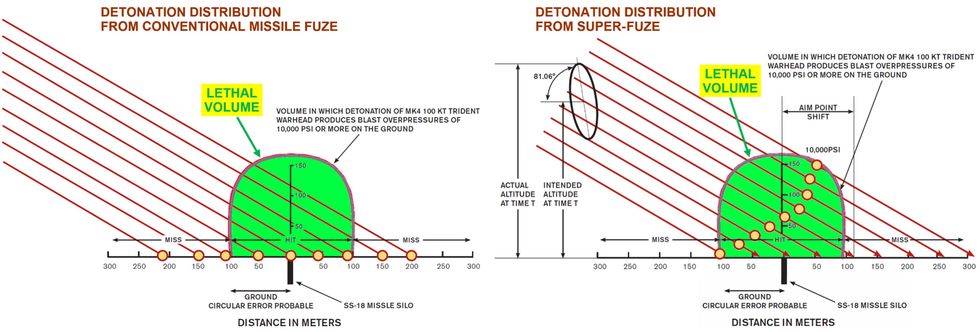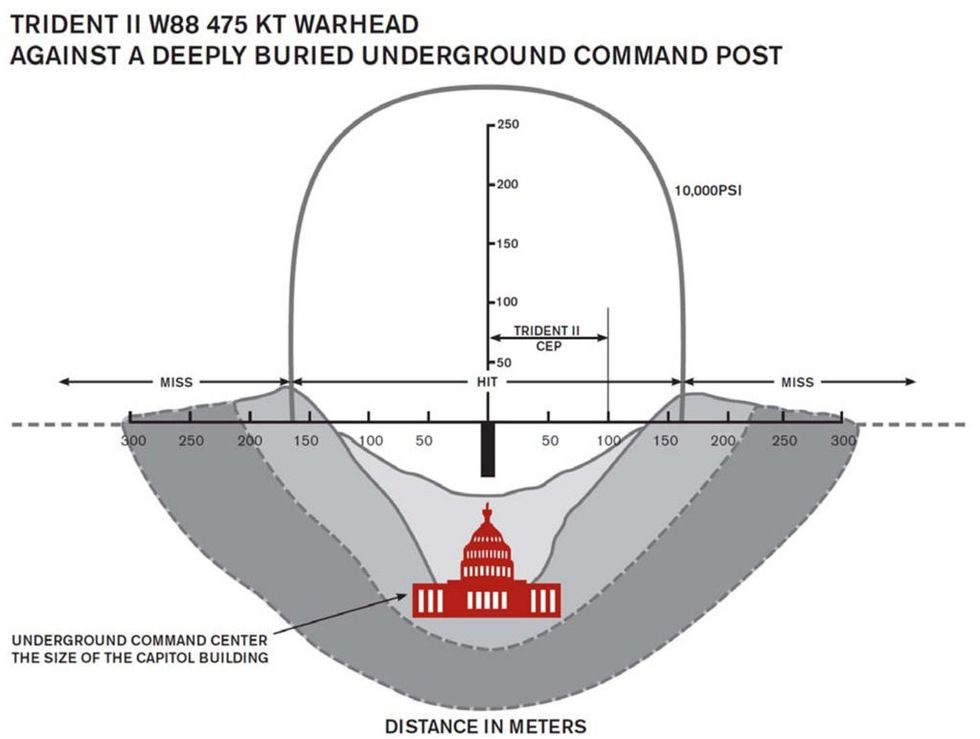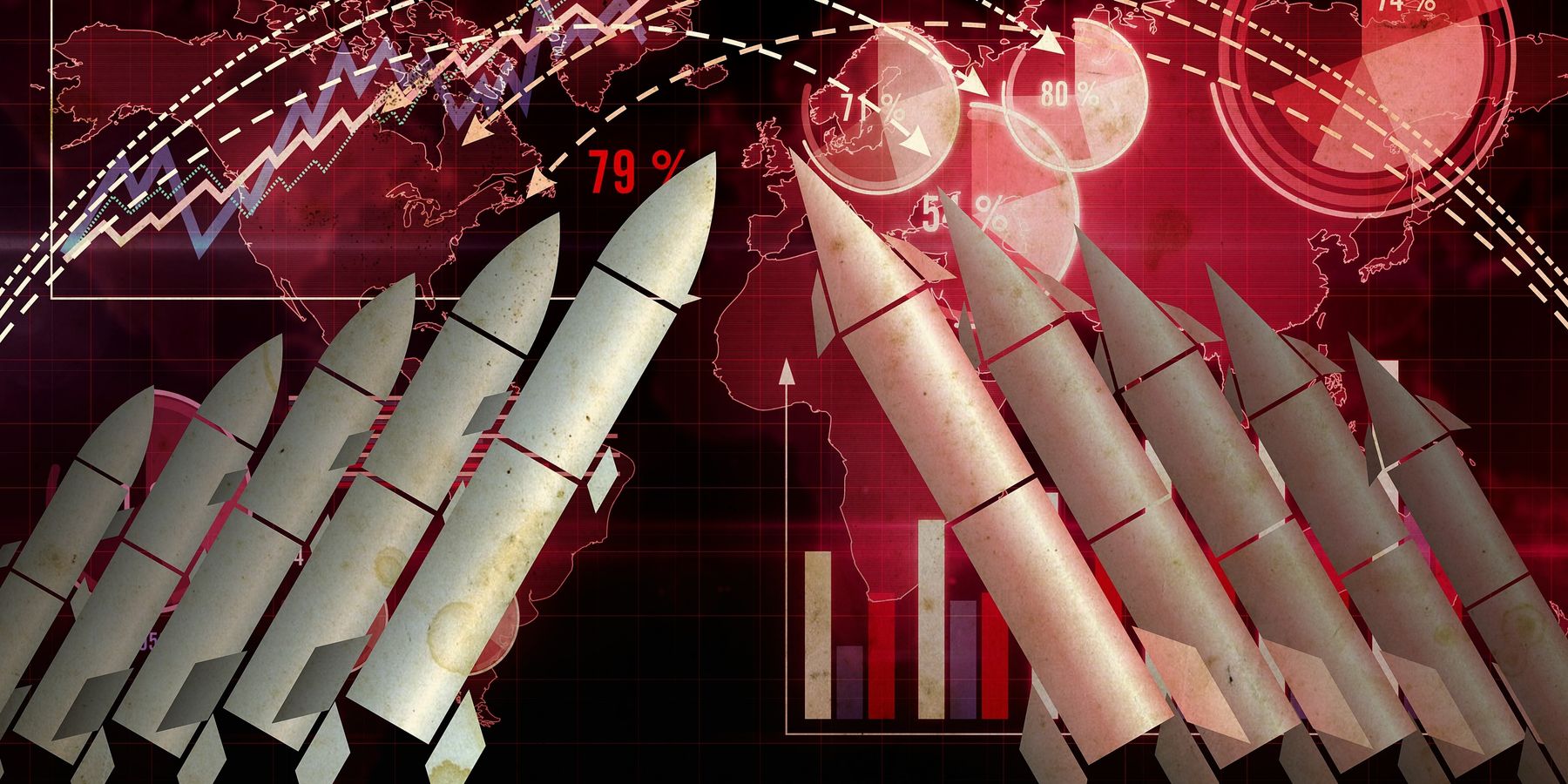The New York Times reported last week that President Biden has approved a secret nuclear strategy refocusing on Chinese and Russian nuclear forces.
According to the paper, the new nuclear guidance “reorients America’s deterrent strategy” to meet “the need to deter Russia, the PRC (China) and North Korea simultaneously.”
However, Biden’s approval of this strategy is no more than a tacit acknowledgment of a two-decade-long U.S. technical program that has been more than just a “slight modernization” of weapons components, but a dramatic step towards the capability to fight and win nuclear wars with both China and Russia. In other words, there is nothing really “new” here at all, save the very public nature of the strategy’s acknowledgement.
In the face of all of this, Chinese and Russian leaders will have no choice but to implement countermeasures that further increase the already dangerously high readiness of their nuclear forces. This includes intensified worst-case planning that will increase the chances of nuclear responses to false warnings of attack.
The technical source of this vast improvement in U.S. nuclear firepower is a relatively new super fuse or “super fuze” that is already being fitted onto all U.S. strategic ballistic missiles. This fuse more than doubles the ability of the Trident II Submarine Launched Ballistic Missiles (SLBMs) carrying W-76 100kt warheads to destroy Chinese and Russian nuclear-tipped Intercontinental Ballistic Missiles (ICBMs) in hardened silos.
The currently (not fully loaded) U.S. Trident Submarine force carries about 890 W-76 100kt and 400 W-88 475kt warheads. The 400 W-88 warheads have been outfitted with the super-fuze and were originally supposed to have the combination of accuracy and yield to destroy Russian silo-based ICBMs before they are launched. But there are not enough W-88s to attack both Russian and Chinese silo-based ICBMs before they can be launched.
So, with the fuse upgrade of W-76s, the W-88 warheads are no longer needed for this job. Numerous upgraded W-76 warheads can instead be used for planned missions against silo-based missiles in Russia and China.
Although 890 W-76s are currently on Trident II submarines, the U.S. has 1600 in total, making the W-76 the most numerous warhead in the American arsenal today. In the eventuality that arms control limitations no longer constrain the size of U.S. nuclear forces, these warheads could readily be added to and carried by the already available at-sea Trident II ballistic missiles, each of which can carry up to 12 W-76 warheads.
With such an “uploading,” there would still be more than enough remaining Trident II ballistic missiles on submarines to carry all of the 400 available 475kt W-88 “heavy” warheads as well.
But let’s talk more about the secret super-fuze or Burst Height Compensating Fuse.

Figure 1: How the super fuse drastically improves the killing capability of ballistic warheads against missile silos (T. Postol)
Figure 1 above illustrates how the super-fuze drastically increases the “killing power” of a ballistic missile delivered warhead.
Figure 1 has a left and right inset, each of which shows a bundle of lines descending from the upper left towards the ground. These lines depict the different trajectories of arriving warheads. This spread in the delivery-accuracy of the warheads occurs due to the combined effects of small errors that lead to differences between the intended and actual warhead trajectories. These errors are from uncontrolled alignment and velocity errors from when the missile is in powered flight, during the missile’s deployment of each warhead, and when the warhead reenters the atmosphere.
The inset on the left of Figure 1 shows the detonation locations of warheads armed with a conventional fuse, and the inset on the right shows the locations of the detonations with the super-fuze.
Both insets show a boundary filled in green that looks like an upside-down cup. This cup shows the volume around the target where the detonation of a nuclear warhead will destroy or “kill” the target.
In the case of the conventional fuse, the warheads land on a plane around the target, some falling outside the lethal volume while others fall within. In the case of the super-fuze, shown in the right inset, each warhead is placed inside the lethal volume, resulting in a much higher percentage of warheads on the different trajectories killing the target.
The super-fuze achieves its fantastic increase in killing efficiency by measuring its altitude at a chosen time while it is still outside the atmosphere but relatively close to its target. If the measurement gives the desired altitude, the fuse determines no corrections are needed. If the altitude is too high, the fuse determines that the path-length and altitude must be changed to assure that the detonation occurs inside the lethal volume.
If the altitude is too low, this means that the warhead will fall short of and outside the lethal volume.This is corrected by intentionally choosing the aim point slightly beyond the target. By shifting the aim point, the fuse both increases the chances that warheads that would otherwise fall both short and long of the lethal volume will be compressed in range (as illustrated in the left inset of Figure 1) to detonate within the lethal volume.
The military implications of this “technically sweet” added capability to U.S. ballistic missile warheads has major implications for the war-fighting capabilities of the United States.

Since super fuse-armed 100 kt nuclear warheads can now replace the much higher-yield 475 kt W-88 warheads for attacks on silo-based ICBMs, the W-88s are now free for other missions, like those against high-priority command and leadership targets. (T. Postol)
Although any technically accurate assessment of the physical consequences of the large-scale use of nuclear weapons instantly shows that “winning” a nuclear war has no meaning, the United States has strenuously emphasized the development of nuclear weapons technologies that could only make sense if their intended purpose is for fighting and winning nuclear wars.
The super-fuze is exactly that kind of technology.
It is now possible, at least according to nuclear war-fighting strategies, for the U.S. to attack the more than 300 ICBM silo-based ICBMs that China has been building since about 2020 with the copious numbers of available 100kt W-76 Trident II warheads. The rapid expansion in “hard-target kill capability” of the 100 kt W-76 warhead also makes it simultaneously possible for the U.S. to attack the roughly 300 silo-based Russian ICBMs.
Couching the development and deployment of these kinds of preemptive strike technologies in misleading terms like “enhancing deterrence,” does not fool the military and political leadership of Russia and China. It instead leaves them no choice but to consider ways of deterring a dangerous U.S. preemption-oriented nuclear-weaponized nation that is constantly striving for better ways to “disarm” large parts of their nuclear forces.
It is no accident that Russian President Vladimir Putin himself approved the development and revealed the existence of the ultimate doomsday weapon — the Poseidon robot submarine, which can carry a 100Mt warhead into the harbors of U.S., European, and east Asian cities — capable of destroying urban areas to ranges beyond 50 miles (80 km) from its underwater detonation point.
The deployment of the Poseidon system by Russia serves as a warning to those who think they can fight and win nuclear wars by preemptively destroying significant parts of China and Russia’s nuclear retaliation forces. No matter how successful a planned preemptive nuclear attack might look like on paper, the reality of a nuclear war initiated with the delusional belief it could be won will be global destruction so great in scale that the very end of human civilization cannot be ruled out.
This is the real bequest of Biden’s new nuclear strategy and the super-fuze.
- The overreaction to China's new nuclear silos ›
- Biden struggling on nuclear arms control ›
- Biden’s nuclear weapons policy carries ‘the seeds of a new nuclear arms race’ ›
















